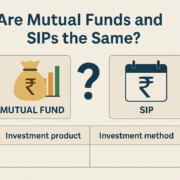💰 The Rule of 72 : A Simple Trick Every Middle-Class Family Must Know to Double Their Money
🏠 1. Why Every Middle-Class Family Needs to Know the Rule of 72
Being middle class means living with hope — hope to educate our children, buy a home, retire peacefully, and occasionally enjoy the little luxuries of life. But dreams cost money. That’s where the Rule of 72 comes in — a shortcut that helps your money work for you.
🤔 2. What is the Rule of 72 in Finance?
The Rule of 72 in finance is a simple formula that tells you how long it takes to double your money with compound interest.
📌 Formula:
Time to double=72Interest Rate\text{Time to double} = \frac{72}{\text{Interest Rate}}
For example, if you invest at 6% return, your money will double in 12 years (72 ÷ 6).
🧠 3. How to Use the Rule of 72 to Double Your Money
Let’s say you invest ₹1,00,000 in a mutual fund giving 9% return.
⏱ According to the Rule of 72, 72 ÷ 9 = 8 years.
So in 8 years:
- ₹1 lakh → ₹2 lakh
- In 8 more years → ₹4 lakh
- Then ₹8 lakh…
This is how middle-class dreams turn into reality—one patient investment at a time.
📈 4. Rule of 72 Explained with Examples You Can Relate To
| Return Rate | Years to Double | ₹1 Lakh Becomes |
|---|---|---|
| 4% | 18 years | ₹2 Lakh |
| 6% | 12 years | ₹2 Lakh |
| 9% | 8 years | ₹2 Lakh |
| 12% | 6 years | ₹2 Lakh |
💡 Use this chart as your middle-class money compass.
👨👩👧👦 5. Rule of 72 for Middle-Class Families Saving for Kids’ Education
For a child who is 5 today, investing ₹1 lakh in a SIP with 9% return can make it ₹8 lakhs by the time they are 29 — using just the Rule of 72 and starting early.
That’s the power of time + middle-class discipline.
💹 6. Rule of 72 for SIP Investments: Why SIP is the Common Man’s Best Friend
When you invest monthly in SIPs, even small amounts can grow big.
Let’s say your SIP grows at 12% annually:
- ₹5,000/month → ₹10 lakh in 6 years
- ₹10 lakh → ₹20 lakh in 6 more years
The Rule of 72 for SIP investments shows why patience always pays.
📉 7. What Happens When Interest Rates Are Low?
If your bank FD gives only 4%,
⏱ 72 ÷ 4 = 18 years to double. That’s a long wait!
Use this to decide where you invest.
Mutual funds, while not guaranteed, often offer higher long-term returns.
📊 8. Rule of 72 Calculator for Middle-Class Families: A Simple Trick
No need for fancy tools. Just keep this in mind:
Years to double=72Your Expected Return\text{Years to double} = \frac{72}{\text{Your Expected Return}}
Let your kids calculate it for fun. It builds financial wisdom early.
💬 9. How Does Inflation Affect the Rule of 72?
If inflation is 6%, and your investment also grows at 6%, your real growth = zero.
So aim for investments that beat inflation by 2–3% to make the Rule of 72 truly work.
🧓 10. Can the Rule of 72 Help You Plan for Retirement?
Absolutely. If you’re 35 and can get a return of 9%, your investment can double every 8 years:
- Age 35: ₹5 lakh
- Age 43: ₹10 lakh
- Age 51: ₹20 lakh
- Age 59: ₹40 lakh
Even without adding more, you grow. That’s why early investing wins.
📚 11. Rule of 72 vs Compounding Formula – What’s Easier?
While the actual compounding formula is:
A=P(1+r)tA = P(1 + r)^t
The Rule of 72 is quick, practical, and emotionally satisfying for most of us who don’t love math.
🛠️ 12. When Should You NOT Use the Rule?
It’s best used when:
- Returns are between 6% to 12%
- You’re dealing with compound interest, not simple interest
- You want a quick estimate, not precision
🪙 13. Final Thought: This Rule is the Middle-Class Family’s Financial Secret
For those of us who can’t afford risks but can afford discipline, the Rule of 72 is hope with math. Start small. Start now. Let time and patience double your dreams.
❓FAQs on the Rule of 72
1. What is the Rule of 72 and how does it work?
It estimates how long your investment will take to double with compound interest. Divide 72 by your annual rate of return.
2. Is the Rule of 72 accurate?
It’s an approximation, but very close and useful for rates between 6% to 12%.
3. Can I use the Rule of 72 for SIPs?
Yes! The Rule of 72 for SIP investments helps you estimate how long your total corpus might take to double.
4. What is the Rule of 72 formula?
Time to double=72Annual Return Rate\text{Time to double} = \frac{72}{\text{Annual Return Rate}}
5. What if my investment return is only 4%?
It would take 18 years to double your money — which is why higher return investments are better for long-term goals.
6. Does the Rule of 72 consider inflation?
No, it’s purely based on nominal return. Consider inflation separately to find your real return.
7. How can middle-class families benefit from the Rule of 72?
By starting SIPs early, avoiding low-return FDs, and using the Rule of 72 to estimate long-term wealth-building goals.












Trackbacks & Pingbacks
[…] A term life policy gives you coverage for a fixed period. For example, if you’re 35 and buy a 25-year term policy, your family gets the assured amount if you pass away during that time. It’s the most cost-effective way to secure your family’s future. […]
Leave a Reply
Want to join the discussion?Feel free to contribute!